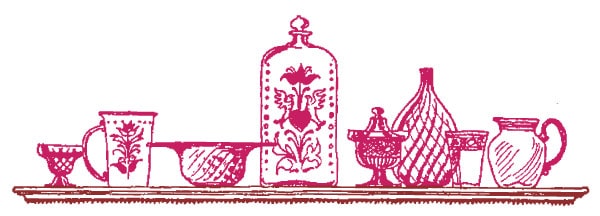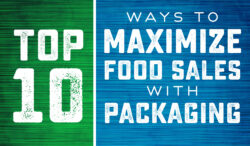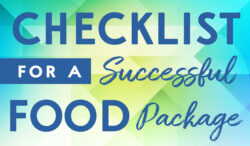Your product only has a 2–3 second window on the shelf to capture the consumer’s attention. How do you make the most of that window and capture the sale?
- Stand out from the crowd. Know your context on the shelf and in the store, and who your competitors are. Then do something different. This doesn’t necessarily mean louder or bolder—if the category is dominated with energetic designs, subdued and tonal could be an effective way to stand out.
- Use color to your advantage. Color has a great ability to capture attention and make an emotional impact when used effectively. A warm and comforting food has a different color palette than a food bursting with cool, minty flavor. Make sure the color matches the mood and flavor of the product.
- Contradict and juxtapose. Positive tension and unusual combinations of elements can make for an arresting presentation that makes the consumer stop and look.
- Connect sight with taste. It may seem obvious, but this is an often-overlooked simple strategy. Reinforce the flavor of the product inside visually on the outside of the package. If you’re selling a coffee-flavored product, put an image of coffee in some form (aroma, beans, etc.) on the package to evoke the appetite in the coffee-loving consumer. An effective test is to take an informal survey on whether people can tell what the product is in at least a general sense by looking at the front panel without reading the words.
- Express the inner contents on the outside. While you’re connecting sight with taste, be sure the overall look and feel of the package conveys as much as possible the flavor and experience that is contained within the package. Being in the specialty food industry, your products are not ho-hum. You’ve got something incredible to share and you want people to know about it. Once they taste it they will know, so it’s all about getting them to pick up the product and convincing them to buy it. Also make sure the words are as delicious and appetizing as the product.
- Show the product. People like to see what they’re buying. Even if you’re just revealing a bit of the product to show texture and quality, that speaks enormously to the consumer and shows that you have confidence in the integrity of your product. Photos don’t go nearly as far but can be effective if used in combination with revealing the product. Beware of photos that make the product look more commercial though.
- Give usage tips. Educate the consumer on how to use your product—even if it’s obvious, reinforcing it in their minds conveys that your product is easy to use. Consider including a short recipe or recipe ideas if you have the room, and always link to website for more recipes and usage info if applicable. If your product can be used in ways the consumer might not think of, definitely mention those so they can see your product in a new light. You’re also educating them and giving them something extra that way. Plus, the more uses your product has, the better a buy it is.
- Make sure they instantly “get” it. The consumer should instantly know what your product is and how to use it just by looking at it on the shelf and reading a few words on the front. Don’t make them have to think. The title should be clear and the most prominent item, and the branding secondary.
- Keep it simple. Don’t overcrowd your package, make it too busy, or fill it with too much information. Think in terms of the consumer. Give only the essentials. Make your copy easy, clear and effective.
- Tell your story. Even if your supporting romance copy just touches on the history of your brand, the people behind it, and how and why it all came about, you’re drawing the consumer in, filling them with your passion, and giving more content to the product. Invite them into your world so they can see what you’re all about, but keep the copy focused on what’s in it for them.
Your packaging has to work effectively on its own. The front panel works to make the consumer pick up the product, the back panel works to close the sale. Don’t forget that all your package information needs to conform to FDA food labeling guidelines. For more detailed information on how to make your package work most effectively on the shelf, see our Keys to Effective Packaging Design article series.




